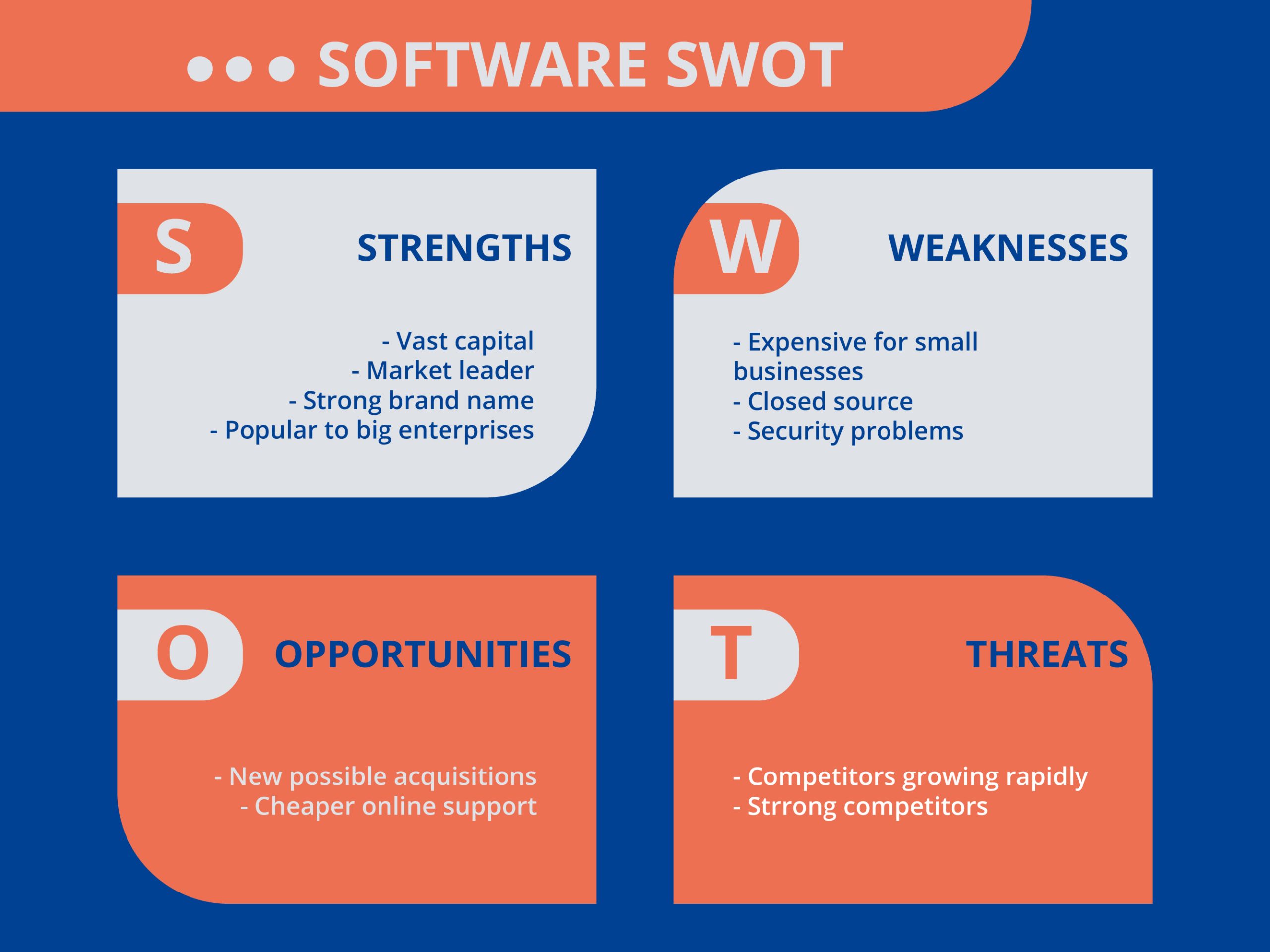
In the realm of strategic planning and business management, the SWOT analysis is a powerful tool used to assess the internal and external factors that can impact an organization’s performance and success. But what exactly are the four parts of a SWOT analysis, and how do they contribute to the overall strategic planning process? Let’s delve into this essential framework and uncover its key components.
Strengths: Unveiling Internal Advantages
The first component of a SWOT analysis focuses on identifying an organization’s strengths, which are internal factors that contribute to its competitive advantage and success. These strengths can include tangible assets such as financial resources, technology, and intellectual property, as well as intangible attributes such as brand reputation, customer loyalty, and talented employees. By pinpointing its strengths, an organization can leverage these advantages to capitalize on opportunities and overcome challenges in the marketplace.
Weaknesses: Confronting Internal Challenges
In contrast to strengths, weaknesses represent internal factors that may hinder an organization’s performance or competitive position. These weaknesses can encompass areas such as limited resources, outdated technology, inefficient processes, or poor management practices. Identifying weaknesses allows an organization to address areas of vulnerability and develop strategies to mitigate risks and improve overall performance. By acknowledging and confronting its weaknesses, an organization can position itself for greater resilience and sustainability in the long term.
Opportunities: Expanding Horizons
The third component of a SWOT analysis involves identifying external opportunities that may benefit the organization and contribute to its growth and success. These opportunities can arise from changes in the market, advancements in technology, shifts in consumer preferences, or emerging trends in the industry. By recognizing and capitalizing on opportunities, an organization can expand its market presence, diversify its product offerings, or enter new markets to fuel growth and innovation.
Threats: Navigating External Challenges
Finally, the fourth part of a SWOT analysis focuses on identifying external threats that may pose risks or challenges to the organization’s success. These threats can stem from factors such as competitive pressures, regulatory changes, economic downturns, or shifts in consumer behavior. By anticipating and preparing for potential threats, an organization can develop contingency plans, strengthen its defenses, and adapt its strategies to mitigate risks and protect its interests.
The Interplay Between Internal and External Factors
One of the key strengths of the SWOT analysis lies in its ability to capture the interplay between internal and external factors that influence an organization’s strategic position. By examining both the internal strengths and weaknesses and the external opportunities and threats, organizations gain a holistic understanding of their competitive landscape and can develop strategies that align with their strengths, mitigate their weaknesses, capitalize on opportunities, and address threats effectively.
Application Across Industries and Sectors
The versatility of the SWOT analysis makes it a valuable tool for organizations across industries and sectors, from small businesses and startups to multinational corporations and nonprofit organizations. Whether it’s conducting a strategic review, launching a new product, entering a new market, or assessing competitive positioning, the SWOT analysis provides a structured framework for decision-making and strategic planning.
Harnessing the Power of SWOT Analysis
In conclusion, the four parts of a SWOT analysis—strengths, weaknesses, opportunities, and threats—form the foundation of strategic planning and decision-making for organizations of all sizes and industries. By systematically assessing internal and external factors, organizations can gain valuable insights into their competitive position, identify areas for improvement, and develop strategies to capitalize on opportunities and mitigate risks. By harnessing the power of the SWOT analysis, organizations can navigate the complexities of the business landscape with confidence and clarity, positioning themselves for long-term success and sustainability.



